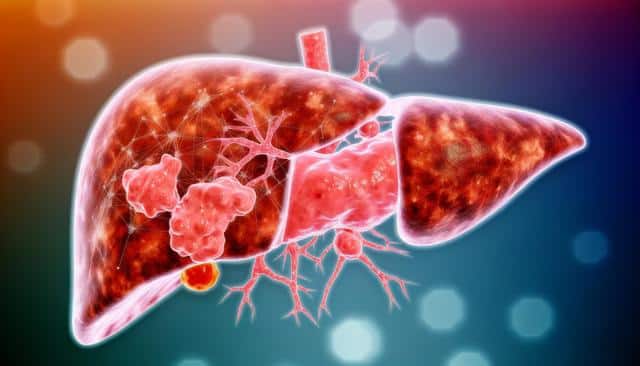Effective Treatment Strategies for Fatty Liver Disease
Understanding Fatty Liver Disease
Fatty liver disease, also known as hepatic steatosis, is a condition where excess fat builds up in the liver. It’s categorized into two main types: alcoholic fatty liver disease, caused by excessive alcohol consumption, and non-alcoholic fatty liver disease (NAFLD), which occurs in individuals who drink little or no alcohol. NAFLD is becoming increasingly common due to rising obesity rates and unhealthy lifestyles. This condition is often asymptomatic, which means it can progress silently until it reaches a more severe stage. Understanding the underlying causes, such as poor diet, sedentary lifestyle, and genetic factors, is crucial for early diagnosis and prevention.

Symptoms and Diagnosis
One of the challenges with fatty liver disease is its silent nature during the initial phases. Many individuals with NAFLD may not exhibit noticeable symptoms until the liver is significantly affected. However, some common symptoms that might eventually appear include:
- Fatigue
- Weakness
- Mild pain or discomfort in the upper right abdomen
- Enlarged liver
- Elevated levels of liver enzymes
For diagnosis, healthcare professionals often use a combination of blood tests, imaging studies, and sometimes a liver biopsy to confirm the presence and extent of fat deposition in the liver. Early diagnosis and intervention can prevent the progression to more severe conditions like liver cirrhosis or liver cancer.
Effective Lifestyle Changes
Managing non alcoholic fatty liver disease effectively often starts with lifestyle modifications. Physicians typically recommend several strategies:
- Adopting a balanced diet that is low in saturated fats and high in fruits, vegetables, and whole grains
- Engaging in regular physical activity, such as walking, running, or strength training to improve overall health and reduce liver fat
- Monitoring weight and aiming for a gradual, sustainable weight loss if necessary
- Avoiding alcohol and other substances that can stress the liver
These changes not only aid in reducing fat in the liver but also improve overall health and reduce risks associated with other metabolic diseases.
Medication and Treatments
While lifestyle changes are critical, some individuals might require additional assistance through medications specifically for fatty liver disease. There are currently no specific non alcoholic fatty liver disease medications approved on a large scale, but research is ongoing to find effective solutions. Some common approaches include:
- Using insulin sensitizers to improve insulin resistance, a common problem in NAFLD
- Employing lipid-lowering medications to manage cholesterol levels
- Exploring new drugs that target specific pathways of fat accumulation
These fatty liver disease treatments are often used in conjunction with lifestyle modifications to provide the best results.
Looking to the Future: Potential Cures
Research in the field of fatty liver disease is rapidly advancing, offering hope for potential cures or highly effective treatments in the near future. Scientists are exploring genetic factors and new drug therapies that could target the underlying mechanisms of steatosis. There’s also a significant focus on developing biomarkers that could help in early detection and more personalized treatment approaches. While there’s currently no definitive cure for fatty liver, ongoing studies continue to provide insights that bring us closer to comprehensive solutions that can effectively manage or even reverse the condition.
Related Articles
Effective Migraine Relief: Tips and Treatments for Lasting Comfort
Mar 7, 2025 at 10:41 AM
How I Reduced My Migraines with These 5 Neurologist-Recommended Tips
Feb 20, 2025 at 5:51 AM
Understanding Eye Bag Removal: A Guide to Causes, Options, and Safety
Apr 2, 2025 at 7:38 AM
Living With Macular Degeneration: What to Know to Protect Vision
Mar 12, 2025 at 8:19 AM
alert! 5 early signs of Alzheimer's in older adults
Jan 13, 2025 at 3:43 AM
The 5 Most Effective Treatments for Atrial Fibrillation (AFib) and Common Mistakes to Steer Clear Of
Feb 12, 2025 at 8:34 AM
New discoveries on macular degeneration in 2025: new hope for patients
Mar 4, 2025 at 10:08 AM
Unlocking the Power of Immunotherapy: A Breakthrough in Cancer Treatment
Feb 10, 2025 at 2:21 AM
Understanding Dementia: Early Symptoms, Progression, and Care Strategies
Jan 15, 2025 at 10:29 AM
Can using soap correctly improve psoriasis?
Feb 8, 2025 at 10:33 AM
Always seek the advice of a qualified professional in relation to any specific problem or issue. The information provided on this site is provided "as is" without warranty of any kind, either express or implied, including but not limited to the implied warranties of merchantability, fitness for a particular purpose, or non-infringement. The owners and operators of this site are not liable for any damages whatsoever arising out of or in connection with the use of this site or the information contained herein.
2023 Copyright. All Rights Reserved.
